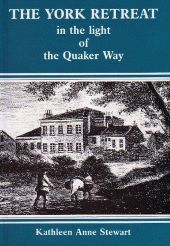Synopsis
On March 15, 1790, Hannah, a young widow, was admitted to York Lunatic Asylum in Yorkshire, England. She was suffering from “melancholy” which today would be called clinical depression. In the eighteenth century, mental illness was not understood and sufferers were treated inhumanely. The usual practice was to chain “lunatics” to walls in unheated cells. They were abused and left naked and dirty, and denied visitors. Hannah’s relatives asked the York Quakers to visit her at the asylum but they were refused permission. She died at the institution on April 29, 1790 after only six weeks. The circumstances of her death shocked the Quaker community.
For the next four years, tradesman and philanthropist William Tuke and other Quakers, including William’s son Henry and the well-known grammarian Lindley Murray, set about trying to redress this situation. William collected donations, debated the way forward, and with local Quakers and doctors set up the York Retreat in 1796. The Retreat pioneered the removal of “inmates’” chains, provided decent food, and offered what we would now call therapeutic regimes; the mentally ill were treated, in the spirit of the Quaker ideology, as equal human beings to whom respect and humanity should be accorded.
Despite the exposure of the reality of conditions at the York Lunatic Asylum, the problems continued there and would not be fully addressed until 1814.






